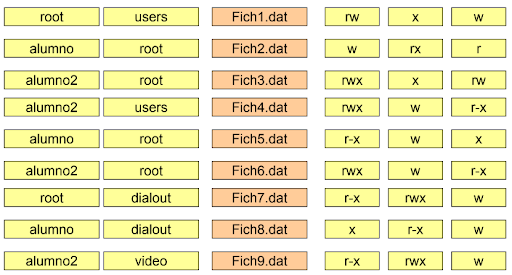-
1. Introduction to operating systems
While web developers primarily focus on coding web applications and front-end development, having a good grasp of operating systems is essential for ensuring the compatibility, security, performance, and reliability of their applications, as well as for troubleshooting and optimizing various aspects of web development.
-
2. Introduction to data networks
Networking is an integral part of web development because web applications rely on network communication to function. A solid understanding of networking concepts and practices is essential for building secure, performant, and reliable web applications.
-
3. The shell. Linux commands
Knowing Linux commands for a system administrator or even a software developer is of utmost importance because most servers run on a Linux or Unix operating system.
- 3.1 ls : showing files
- 3.2 file permissions
- 3.3 mkdir. Creating directories
- 3.4 rmdir. Deleting directories
- 3.5 Moving/renaming files and directories
- 3.6 Other commands
- 3.7 Mounting units
- 3.8 Daemons
- 3.9 What processes are running?
- 3.10 Who am I and where am I?
- 3.11 Files has its owner
- 3.12 Other commands
- 3.13 Users
- 3.14 The /etc/passwd file
- 3.15 The /etc/group file
- 3.16 Links
-
4. Shell script
In this chapter I want you to learn shell script but based on examples. Once you see the example I will propose another very similar one. If you do it and it works great, that means that not only do you understand the exercise but you are able to perform similar exercises. Keep in mind that with shell scripts you have to be patient. Misplaced whitespace can even cause a script to not work. If that happens, take a deep breath, be patient and persist, you will surely find the solution to the problem.
- 4.1. Your first shell script
- 4.2. Adding comments to your shell script
- 4.3. Variables in bash
- 4.4. Functions in bash
- 4.5 Conditional sentences
- 4.6. Repetitive sentences. Loops
- 4.7. Returning to functions
- 4.8. Arguments passed to a shell script.
- 4.9. Interaction with the user.
- 4.10. Using bash as a calculator
- 4.11. The expr command
- 4.12. What is the exit command and exit status?
- 4.13. File comparisons.
- 4.14. Comparisons of integers.
- 4.15. The shift command.
- 4.16. The let command and the arithmetic operators.
- 4.17. Logical operators.
- 4.18. The generation of random numbers.
- 4.20. C-style variables.
- 4.21. Menus in shell scripts.
- 4.22. Length of a string.
- 4.23. Finding out the numerical position of a substring in a string.
- 4.24. Extraction of a substring.
- 4.25. Deleting a substring.
- 4.26. Replacing a substring.
-
5. NETWORKING
3.11 Files has its owner
In every Linux system, the files belong to whoever creates them, who is then the only one who can delete them, execute them, etc. This is so because Unix was designed to be managed by many users at the same time, and in this way no one could access your files without your prior consent.

3.11.1 Changing the owner of a file
There are 3 utilities to change the attributes of a file:
- chown Change ownership of the file.
- chgrp Change group to a file.
- chmod Changes the attributes of a file.
When creating a file, by default, it will belong to the owner who creates it. If I write:
vi saw letter.txt
The letter created will be from Juan Carlos, with its own attributes, but if I am as root, and I create the same letter, the letter will now be root.
basic rules
- Only the owner of a file can change their properties, and even owner.
- No user will be able to change the properties of no file, nor its owner
- root, you can change the properties of ALL files, and even change their owner.
- The above mentioned will be of no use if the group to which it belongs also has the property of writing on the file, therefore, any user can change the owner, group or properties of a file.
Examples:
To change the owner of a file, you must use the chown command:
chown -c javier ThisFile
Now “ThisFile” will belong to javier.
If you want to change the group to the file “ThisFichero”
chgrp –c users ThisFile
And if from the beginning you wanted to change users and group have written:
chown –c javier.users ThisFile
3.11.1 Changing the attributes of a file
- chmod u+rwx letter.txt
Where “u” refers to the user who created the file.
- chmod g+rwx letter.txt
Where “g” refers to the user’s group
- chmod o+rwx letter.txt
Where “o” refers to the rest of the users. Using “a”, will modify all attributes
- chmod a+x myscript
It will change all the execution attributes to the “myscript” script, to be run by the owner, the group and others.
chmod can also be used with OCTAL numbers. To determine the permissions of a file or
directory the chmod command is used, this command can use two methods to establish them but we will use the simplest called Absolute. It assigns a value to each permission:
4 r-read
2 w-write
1 x-run


Exercise:

